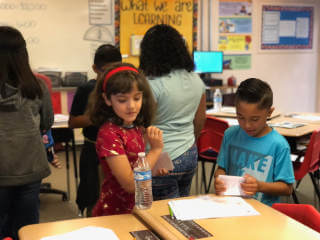Giving students an opportunity to touch, move, and manipulate content and language can have a powerful impact on student engagement and on learning. Students are naturally drawn towards the physicalization of learning.
The first feature in this SIOP component asks the teacher to use manipulatives and other kinds of hands-on materials as a means of getting students to practice the new content. While it's much easier to blow off hands-on, tactile activities, students find them engaging and meaningful. It doesn't have to take too much energy or time to create tactile activities. Here are three easy ways:

So, the question is not, "should I give my students something for them to handle/hold?" The question is, "how should I structure this so that students use the manipulatives responsibly, as I planned?" Research shows that teachers often balk at trying out a strategy if they feel classroom management might become an issue. Here are three tips on making sure the discussion is worth it:
TESOL Trainers can make SIOP come alive for all teaching staff. Our use of experiential learning, engaging lessons, and scores of easy-to-use techniques empowers teachers with new approaches to connecting students to the language, the content, and one another.
John Kongsvik, the director of TESOL Trainers, presents a model lesson on run-on sentences here. The 150 participating teachers become students an get a feel for what the lesson is like through the eyes of a learner.
Everyone who participates in our professional development says the same thing: "This was the best workshop I have ever attended."
Click the button below to claim your free ebook and join our mailing list.